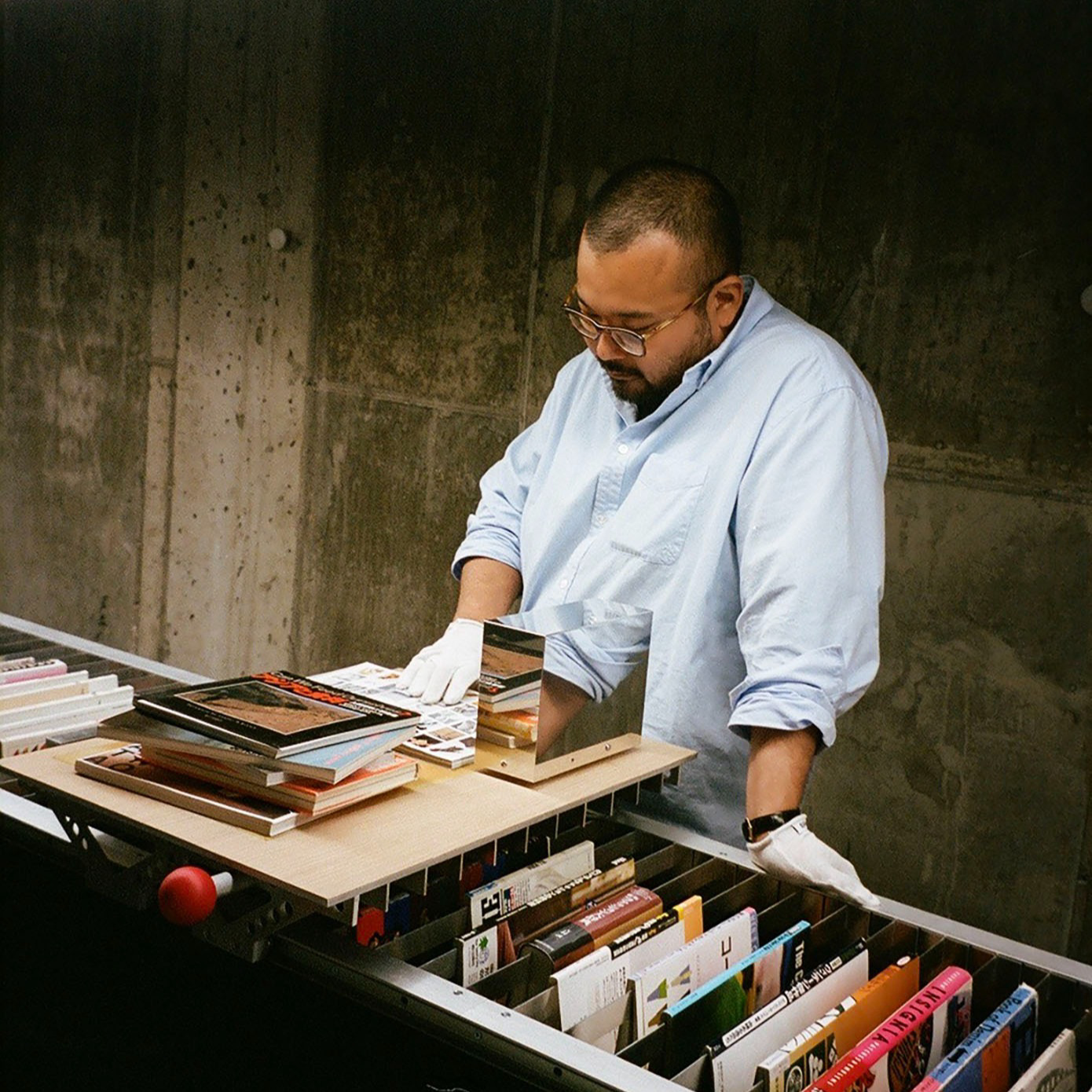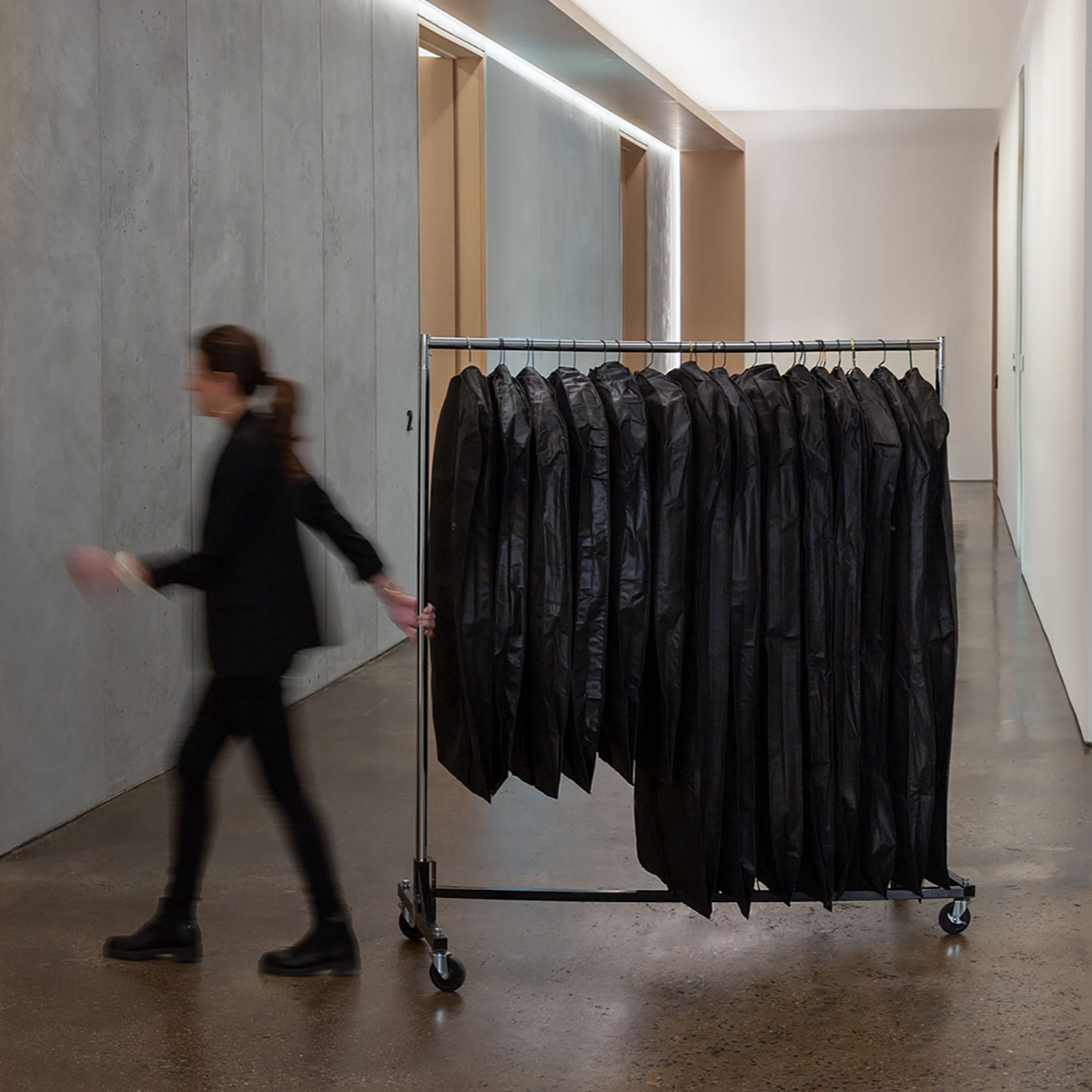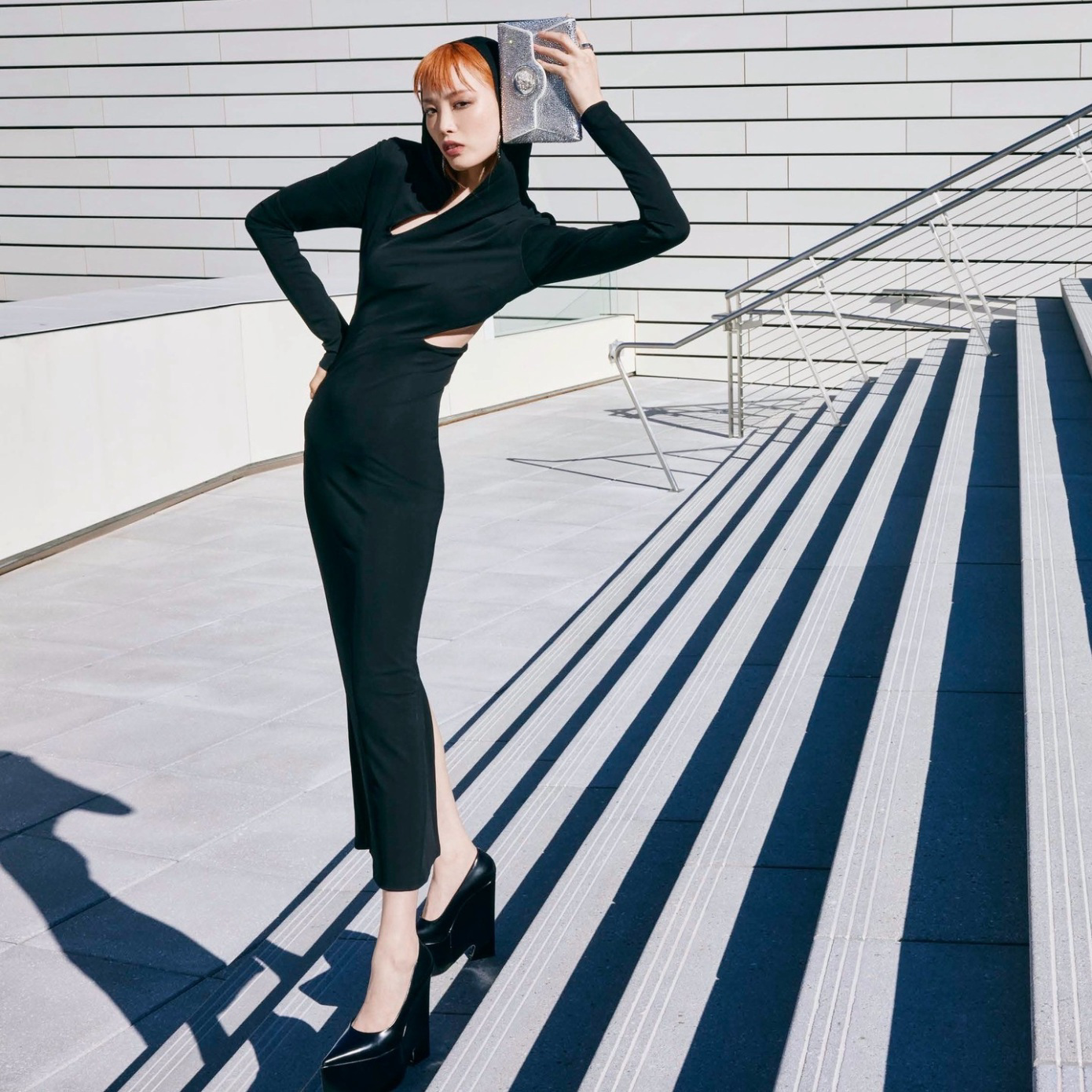From myth to Mother Nature, WSN’s latest batch of Premiere Classe designers pull inspiration from every possible source. Following this year's edition of the fashion fair, held alongside Paris Fashion Week in the heart of the French capital, CULTURED rang up the most captivating participants for a deeper look at their eclectic practices.
Centering cutting-edge ready-to-wear and accessory designers, Premiere Classe honors originality and transformation in the fast-paced world of style. The annual fair gives industry insiders an opportunity to explore what’s next in fashion.
Despite the varied backgrounds, tastes, and talents of the designers interviewed below, an emphasis on sustainability and slow fashion proved universal at this year's edition of the trade show. As hoards of style aficionados descended on Paris to catch the latest styles, these creatives stayed true to their hunger for innovation and experimentation in crafting garments that extend beyond trend cycles, inscribing themselves in fashion history.
Here, meet the latest in made-to-keep ready-to-wear.
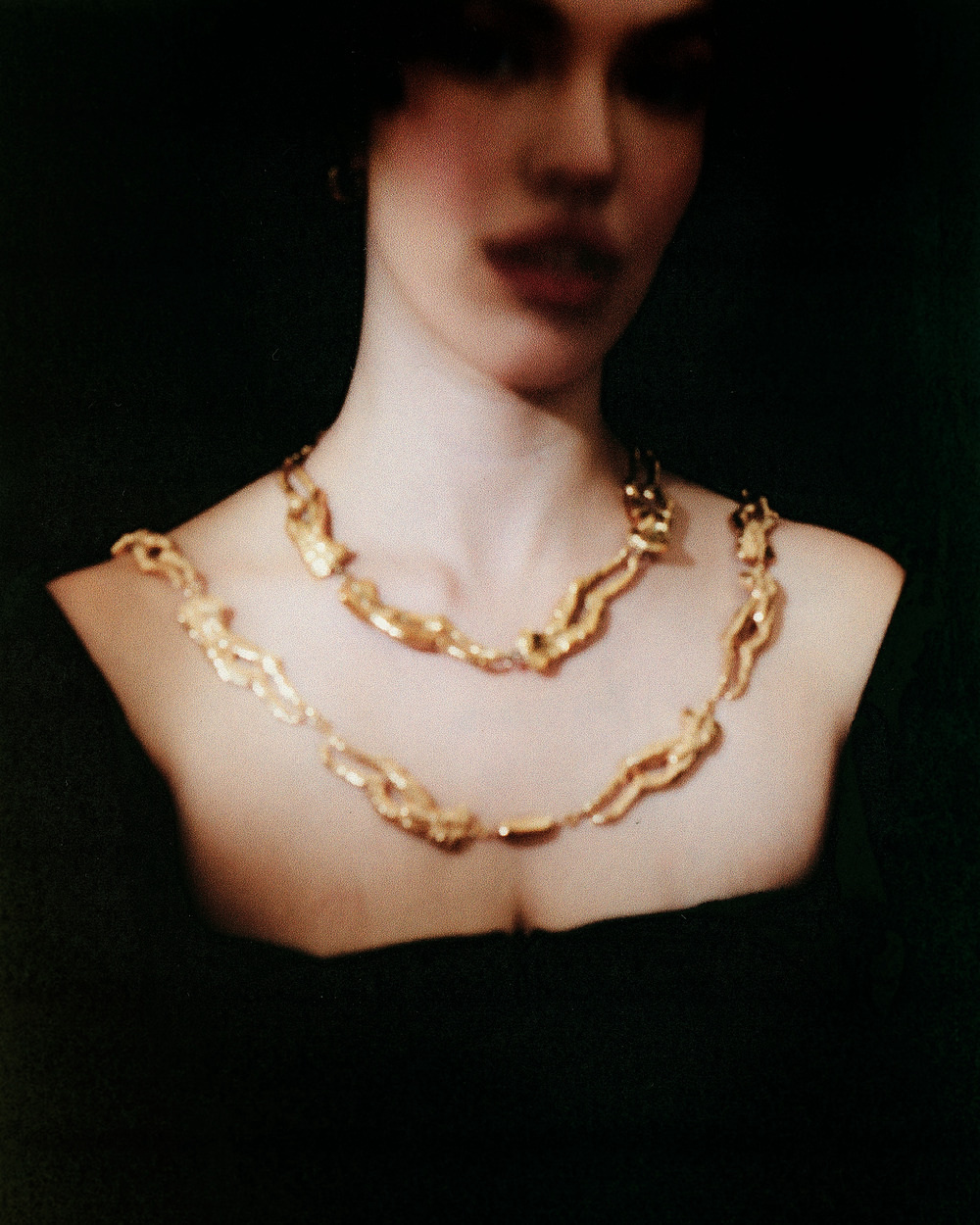
Isabella Rudzki
As a researcher steeped in neoclassicism, Isabella Rudzki has crafted a contemporary visual language of nonconformity. Pulling from the intricacies of the human form, Rudzki has explored individuality and inclusion through performance art, sculpture, and stage design, as well as fashion.
Tell us a bit about your background as an artist and how it informs your work.
I trained as a fashion designer and worked in the clothing industry, but most of the experience I draw upon in my current work began much earlier. I grew up in a family of self-taught craftsmen who could do almost anything. As a child, I was always very free and learned to use my hands without shying away from physical work. Even though I work very conscientiously, I don’t exclude the role of chance; the first prototype is always the most intuitive and true. But sometimes, one has to take a step back from one thing to avoid losing sight of the bigger picture, to look beyond what you’ve learned or to change the dimension.
What made you decide to launch your own brand? What has been the most surprising part of the journey?
I founded the brand because my greatest ambition was to innovate bodies in nonconformity and turn my inner truth into something the world doesn’t yet have. In order not to leave it polluted, but enhanced. The label almost started on its own because it’s difficult to separate it from my artistic existence and personal journey. The biggest surprise has been how effortless it can feel to follow that path. On the way, I’ve learned how little you actually need to be happy, and that sometimes, the greatest satisfaction comes in the smallest forms. The mere existence of something, along with its peculiarities, is the greatest gift.
Where can you always look for inspiration?
In the past—through history, myths, and tales—we find timeless stories that create countless images. In my dreams, I reach for the future, finding inspiration in places where no answers exist yet and where something new can be invented. In the present, I take in what is visually in front of me and feel what my hands can grasp. Human bodies and their mystical variations are always at the center of my interest. These forms appear dynamically or surreally deformed in the collection. Interaction gives the work meaning and shows that my moving environment is a great source of inspiration.
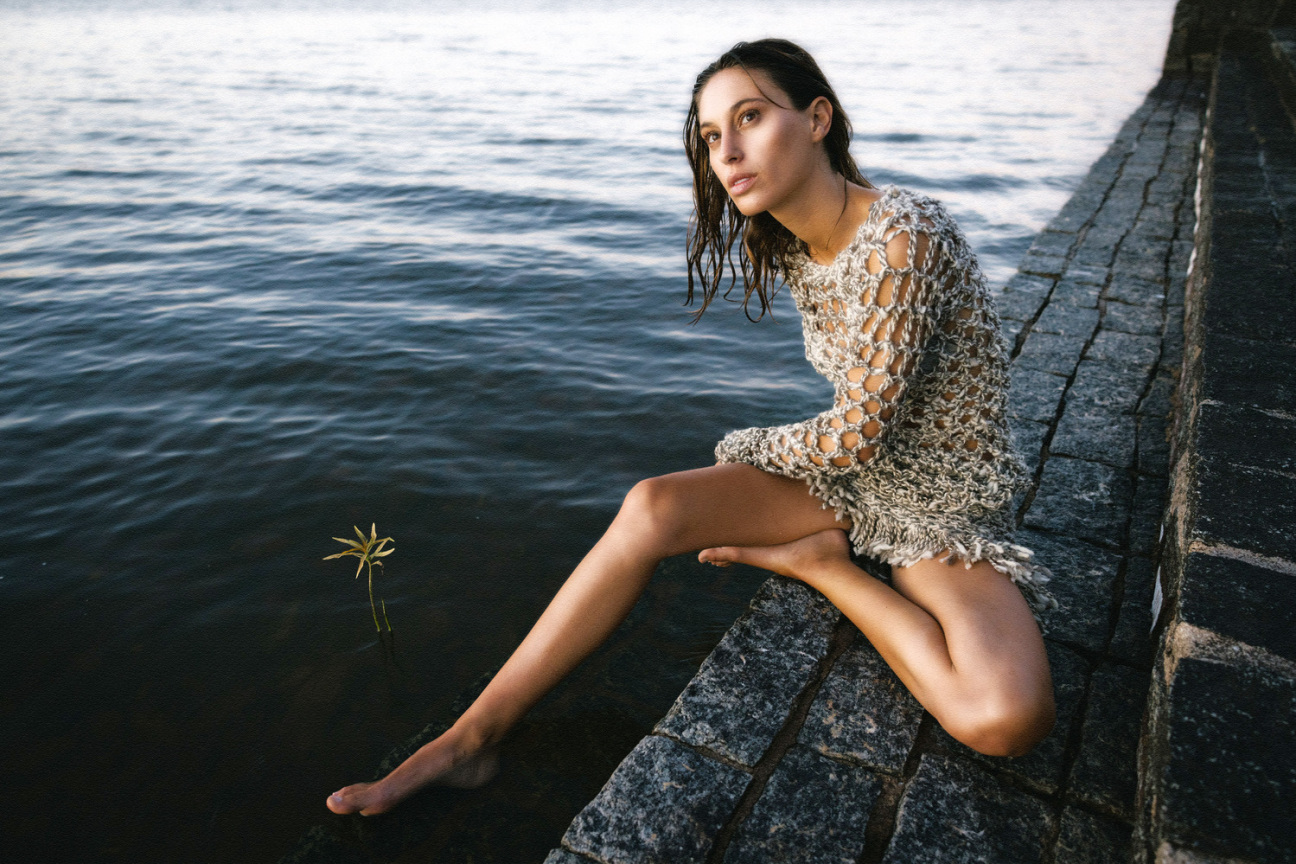
Milagros Pereda
A passion for textile development and knitwear has taken Argentinian designer Milagros Pereda from the serenity of her family’s farm to the bustling streets of Paris. While she continues to develop her artisan sensibilities, the City of Lights has not detracted from her passion for sustainability in the textile industry.
Tell us a bit about your background as an artist and how it informs your work.
I was born in Buenos Aires, Argentina. When I was 11, I moved with my family to a farm in the province of Entre Rios to run a nature reserve. I was able to witness first-hand how commercial farming and wildlife sanctuaries can happily coexist. I learned from Mother Nature herself. Her simplicity and completeness gave me insight and a profound awareness of the importance for conservation. I also read up on and immersed myself in many Argentine traditions and saw the desperate need for social inclusion. My grandfather, a successful artist and environmental activist, introduced me to the astonishing world of art with a sustainable approach. These early experiences undoubtedly shaped the way I perceive my great passion: fashion. As I began studying Fashion Design at the University of Buenos Aires, I worked for several well-known brands. Each provided me with a different perspective on product development, the creation of digital fashion collections, and market analysis and its desires.
What made you decide to launch your own brand? What has been the most surprising part of the journey?
I struggled as I learned that the textile sector was one of the most contaminating industries in the world with precarious working conditions. This motivated me to set up my own brand, based in Argentina, which promotes and adds value to local artisan work in an eco-friendly way. Every piece is handmade with natural fibers and artfully blends painting, printing and pleating. The discovery of new and unique Argentine materials has been a part of my quest. This ranged from biomaterials to handmade felt and has unquestionably enabled me to create unique pieces.
Even though Argentina is very rich in raw materials and human resources, there are plenty of handmade products that are very much undervalued. My goal is to develop and internationalize these unique Argentine products. I have set slow fashion as my main focus, where each garment is carefully handcrafted with limited productions. Two years ago I moved to Paris to do a master in Fashion Design at Parsons Paris, with the objective of introducing myself to a global market, and understanding the luxury fashion industry.
Who do you envision as your customer? Has the way someone’s worn your piece ever changed your perspective on the design?
My customer is someone that appreciates craft and respects the slow pace of making an artisanal garment, as well as the special care that should be put into it. It is someone that wants to stand out with a special piece and is not afraid to step out of the box. But overall, I am very happy to give an open invitation to anyone that is attracted by the product itself, as well as the story behind it. I have been really surprised by the diversity of people that bought my clothes and the many different ways of using them. It definitely has made me less strict when designing. Even when I don’t love something I made, I have found that someone else might love it. It definitely allows me to experiment without so many restrictions.
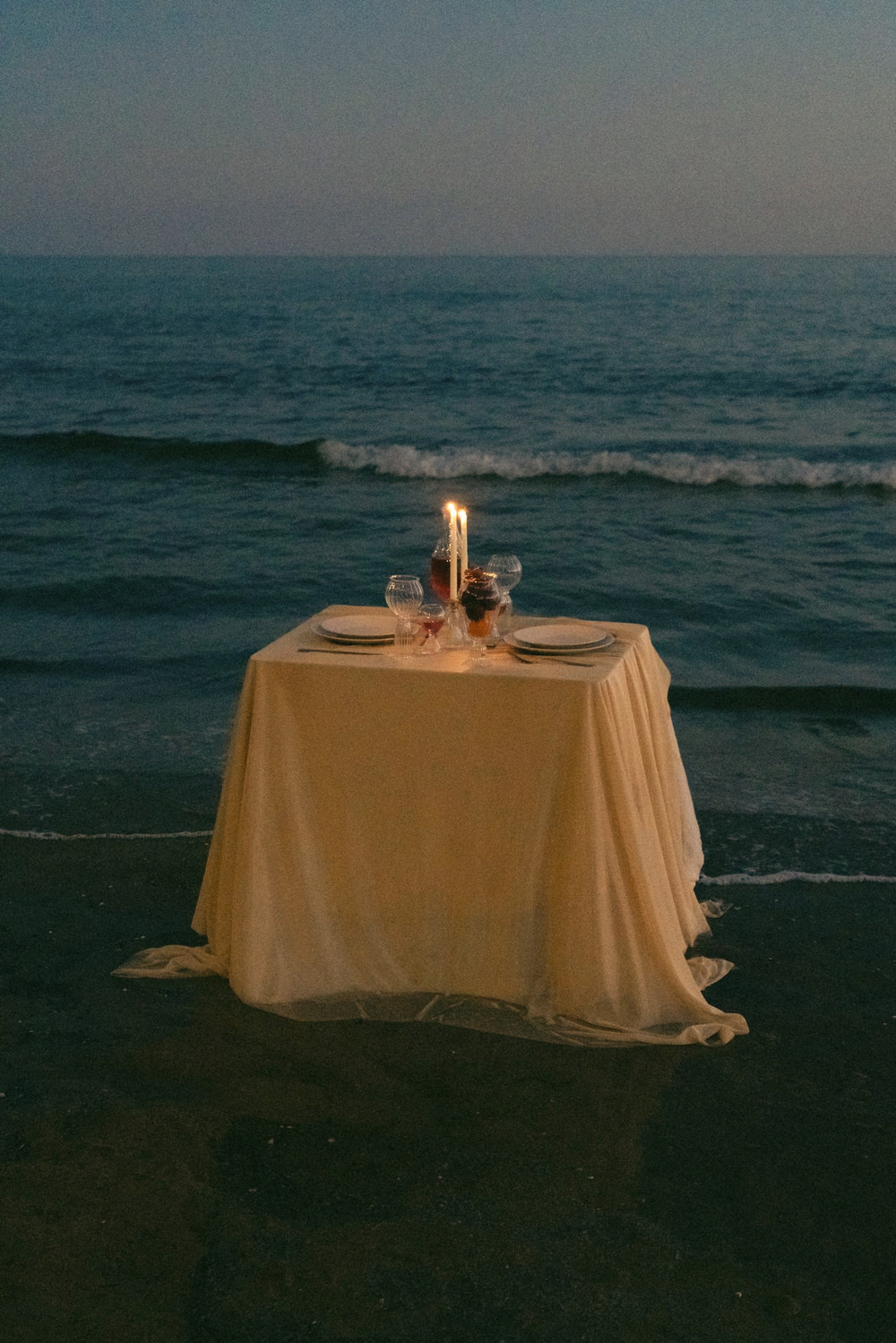
Petite A
Grounded in its French and Spanish origins, Petite A’s glass works find their inspiration between the country and the sea. From jewelry to tableware, the Mediterranean lives in each piece, whether its adorning your wrist or dinner spread.
Tell us a bit about your background as an artist and how it informs your work.
Petite A was born during the pandemic while I was studying design in Barcelona. Working manually had always helped me connect with myself, finding inspiration in materials, their characteristics, and formal possibilities, in order to design through them. After a personal search to find a special material that would catch my attention and offer a wide range of possibilities, I discovered glass. I immersed myself in the craft of borosilicate glass through the flamework technique, both solid and blown glass. Initially, I delved into the world of contemporary jewelry, creating my first collections, and eventually, I began experimenting with objects, leading to my first collection focused on table art. In this collection, I aim to transform conventional objects into avant-garde works, fusing jewelry with functional and decorative elements.
What made you decide to launch your own brand? What has been the most surprising part of the journey?
The launch of my brand was never something I planned. It happened organically as I shared my work on social media and incorporated glass into my final university design projects. I became aware of my artistic connection with the material and, at a certain point, decided to give it tangible form through a brand—both to preserve that connection and to make a living from it. The most surprising aspect of this decision was realizing that I was creating and shaping my own artistic journey, blending craftsmanship and design. I’ve always loved art since I was a child, but it wasn’t until after completing my scientific studies in high school that I decided to follow my instincts and give myself a chance in the art world. Taking that leap allowed me to discover and understand myself, and ultimately led me to build my own brand in a completely genuine way—one that allows me to fully enjoy everything I’m passionate about, completely falling in love with glass.
Where can you always look for inspiration?
My greatest source of inspiration always comes from experimenting with the material, with the aim of uncovering its fullest formal potential. In the case of glass, whether working with it in solid or blown form, I discovered that it strongly reminded me of water—its reflections and transparency—and of freshly made caramel, in terms of its plasticity and malleability while being shaped. It’s a connection to both my childhood and nature that always leads me back to my inner child, passionate about art and fascinated by the sea, where I grew up. My work is inspired by organic forms, seeking beauty in imperfection and in the natural qualities of the material. The process of glass solidifying is utterly magical and mesmerizing. The concept of time, which dictates how it must be worked, its transformations from solid to liquid and back again, its transparency, lightness, and fragility—its ephemeral yet enduring materiality—all captivate me deeply.
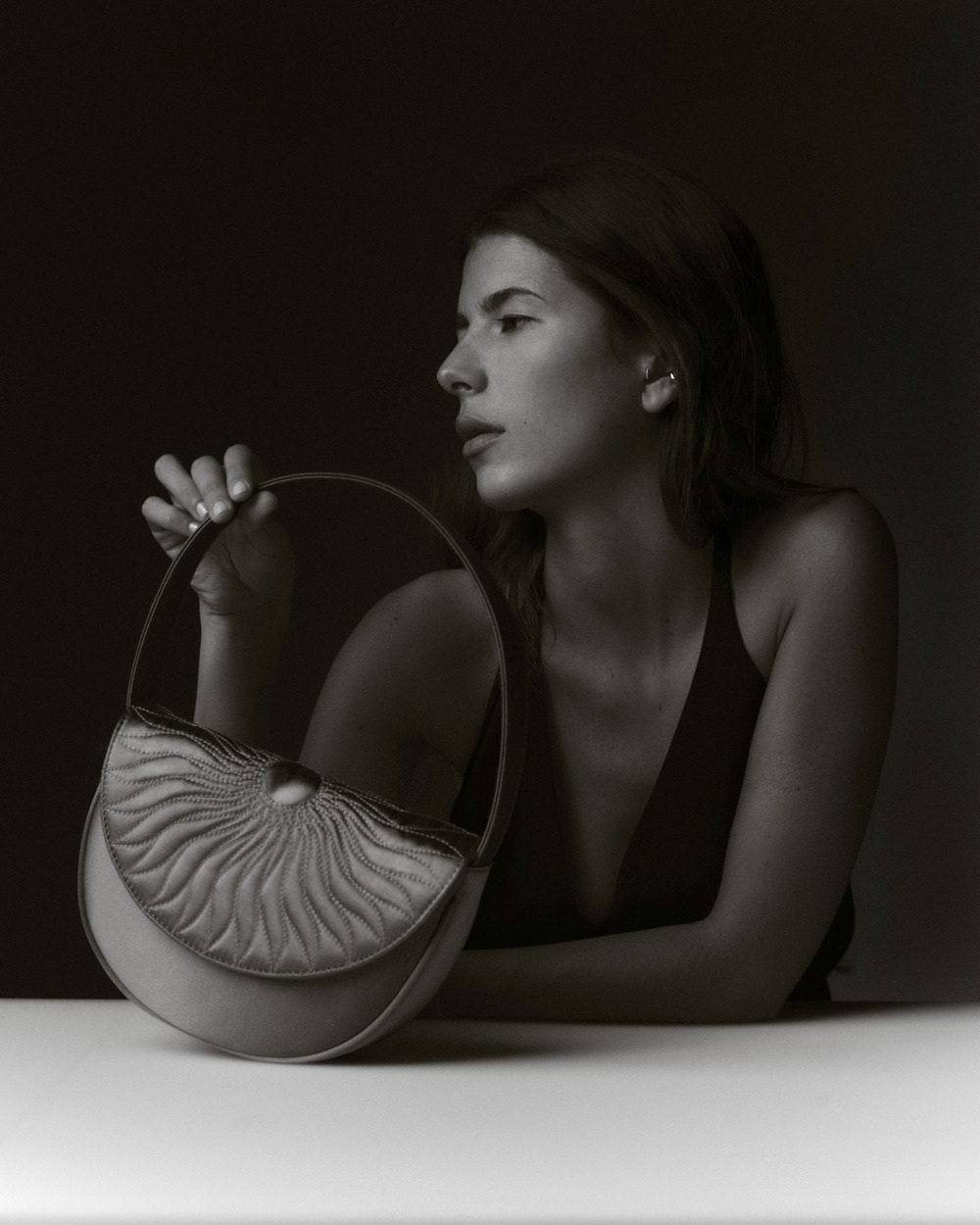
Lunier
Informed by the moon’s poetic serenity, Lunier encourages customers to explore universal complexities, self expression, and the delight of sense with its range of celestial handbags.
Tell us a bit about your background as an artist and how it informs your work.
I consider myself more of a creative than an artist, but I’ve been drawing for as long as I can remember. I’ve always been quite contemplative, fascinated by the beauty around me, and growing up, I was lucky enough to be exposed to different forms of art early on. My mother, recognizing my artistic sensitivity, took me to art exhibitions before I could even walk. I became familiar with the works of Matisse, Calder, Picasso, Man Ray, and Miró, amongst others. From a young age, I also felt a special connection to fashion, deeply inspired by the creative genius of Yves Saint Laurent. I immersed myself in learning about designers, their inspirations—whether from art, film, or music. Wanting to “learn the language,” I devoured fashion magazines, studied photographers, and explored their references.
Where can you always look for inspiration?
While inspiration can come from anything, nature is an endless source for me. Its beauty and harmony can be witnessed everywhere, on every scale, from the tiniest detail to the vast cosmos, if we only know how to look. I can spend hours contemplating the reflection of the sunlight on water, the way a ray of light filters through trees, or the dancing shadows of leaves on the ground. I also draw a lot of inspiration from art, architecture, and photography, and I try to visit exhibitions as often as I can.
Who do you envision as your customer? Has the way someone’s worn your piece ever changed your perspective on the design?
We are all so different, unique, and—especially today’s data-driven world. I like to believe that there is an element of magic in the connections we form. Whether with people, objects, or art, we can’t always explain why we feel drawn to something, or someone, over another. I believe that if you create from the heart, your work will naturally resonate with others on an emotional level. I want to be as welcoming as possible, leaving the door of possibilities open. And I have been pleasantly surprised by the wide range of people who have connected with the brand so far.
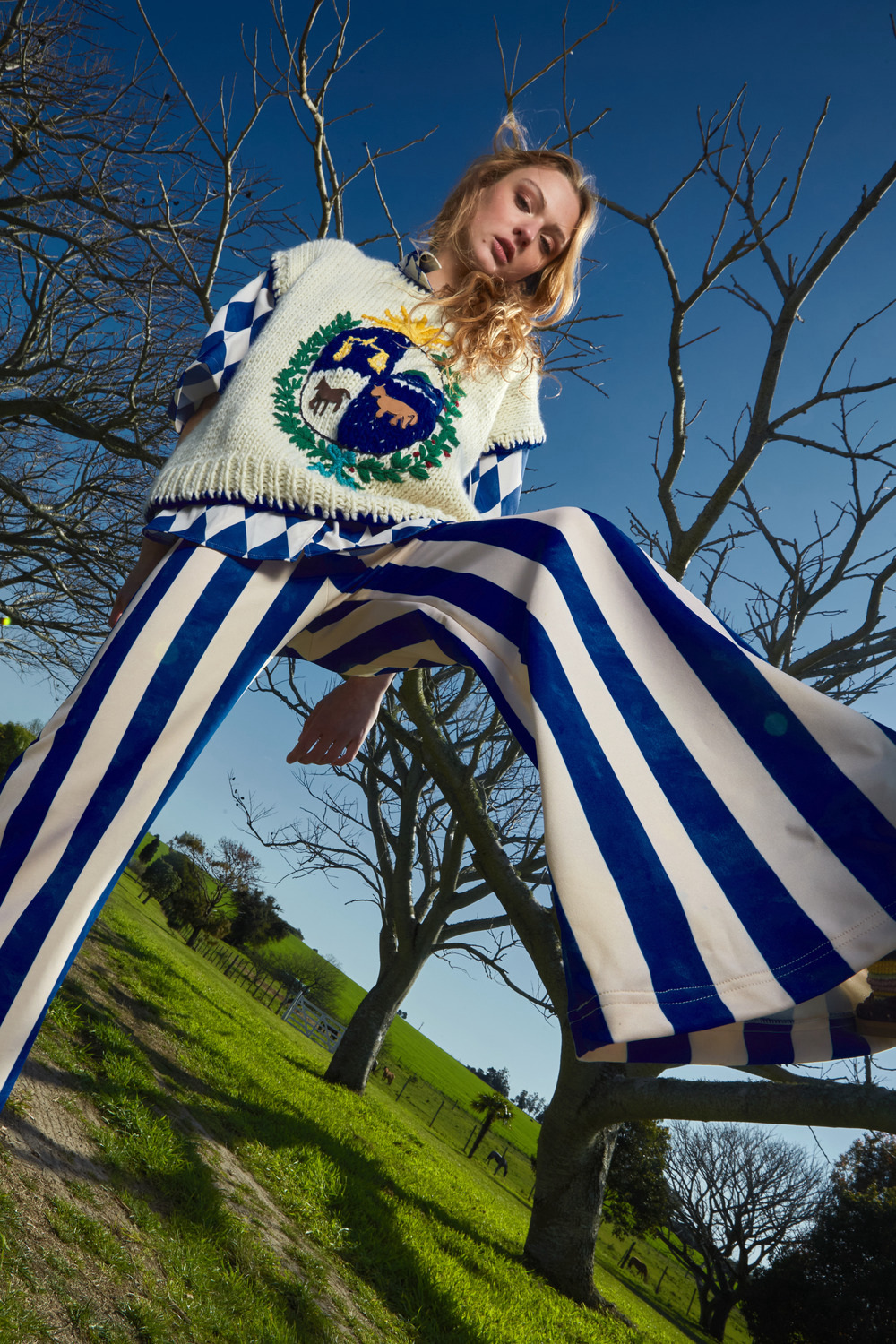
The Farra
All the way from Uruguay, the Farra, formed by a diverse trio of creatives, pulls from history to craft long-lasting garments. Their organic, vibrantly patterned pieces provide a poignant reflection of the hands and minds at work crafting them.
Tell us a bit about your background as an artist and how it informs your work.
We are three partners of varying ages, each carrying diverse creative experiences related to fashion and design in our emotional baggage. Silvia, Chiara, and Tini share roots in expertise with knitwear, noble materials such as leather and wool, artisanal embroidery, dyeing, and the refinement of haute couture. Fashion has been passed down to us as a legacy from previous generations, and the Farra is, in many ways, a tribute to them. It honors those ancestral production techniques that make our garments so unique, beyond just their bold, innovative designs and vibrant energy. Fortunately, the youngest among us specializes in technological fashion, and with that innovative touch, we are able to achieve exceptional results by blending our three strengths. We seek to create a fusion that evokes both the organic and the elegant, enhanced by a creative splash of color.
Where can you always look for inspiration?
We do not actively seek inspiration; it finds us. It may come from a song, an elegantly dressed elderly man on the street, a fish market stall, an old photograph of Uruguay, or even a simple napkin. The essential element is to remain receptive, allowing ourselves to truly perceive, rather than merely observe, what surrounds us. Our cultural heritage is deeply embedded in our creative process. The essence of Uruguay—captured in its fields, fresh air, mate, beaches, and salty water—inspires us profoundly. This vibrant cultural backdrop fuels our imagination and drives us to dream bigger. The passion of the people who breathe life into each garment adds a unique dimension, making the transition from concept to tangible piece both challenging and invigorating. The process is just as inspiring as the final garment itself.
Who do you envision as your customer? Has the way someone’s worn your piece ever changed your perspective on the design?
Our ideal customer is someone who seeks to "irse de farra," a phrase in our language that means to enjoy themselves and embrace spontaneity. We design garments with a narrative for individuals who are crafting their own stories. They also understand the true value of the product they are purchasing, recognizing that each piece may have passed through three different artisanal workshops and been shaped by many skilled hands. This process not only gives form to the garment but also adds the warmth and care of human craftsmanship, which we aim to represent in every piece we create. We believe that true luxury lies in the natural and organic, and we embrace the imperfections that arise from handmade processes, viewing them as unique qualities that make each garment one-of-a-kind. We are consistently impressed by the versatility with which our pieces are styled. Many of our fabrics are unisex, and we felt deeply impacted by the fact that the CEO of BOF purchased one of our sweaters and styled it in such a way that it looked as if it had been designed specifically for him. It was a moment of great pride for us and for our country.
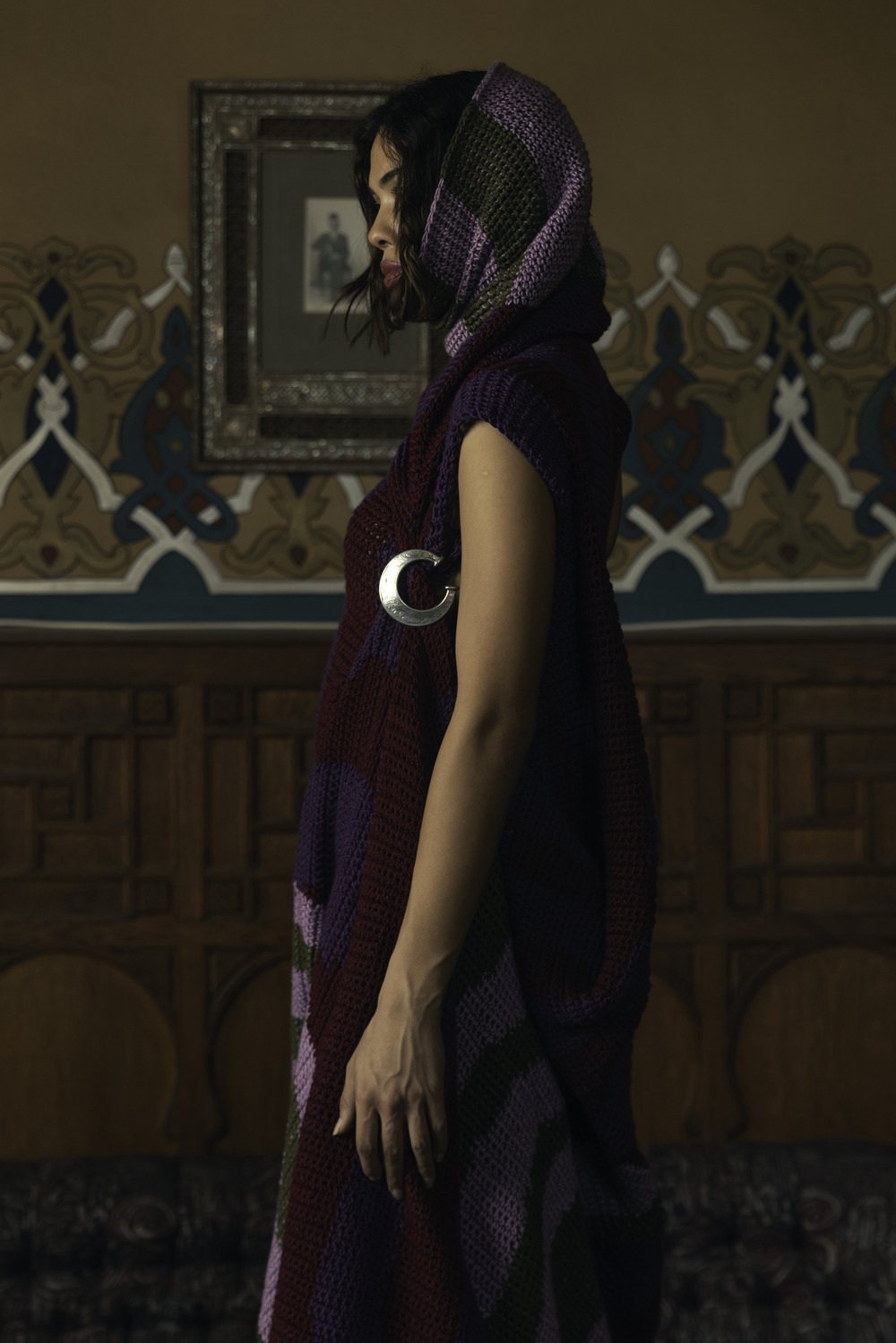
Amina Galal
Amina Galal brought her multicultural perspective from Cairo to Paris as she began her studies at Parsons. Even as she takes her line of high-end knit garments abroad, the essence of her hometown is what fuels the brand.
Tell us a bit about your background as an artist and how it informs your work.
I grew up as a bit of a nomad, constantly moving due to my father's work, which meant living in six different countries across three continents. This upbringing sparked an early obsession with cultures—their interactions, the lack thereof, and how they evolve over time. I was always fascinated by how the younger generation reinterprets and reintroduces their heritage. Being away from Egypt most of the time only deepened my connection to its culture. I felt like an outsider looking in, trying to find my voice within its rich stories, music, films, and art. I wrapped myself in my country’s heritage and history to anchor myself, even from a distance. This global perspective fuels my work’s deep-rooted connection to Egyptian culture. I’m interested in how cultural norms evolve from one generation to the next, dissecting these changes to understand their origins. My work celebrates this evolution, honoring the past while embracing the new.
What made you decide to launch your own brand? What has been the most surprising part of the journey?
After a brief stint in the industry, I craved something more—a challenge, a quest to find my voice and identity through my art. The global fashion industry has very few Middle Eastern designers, and this is a pivotal moment for us to use our talents and voices to make a positive impact. It’s about owning our narratives, telling our stories our way, and reclaiming our identities. That realization felt like a calling, and I knew it was time to take the leap. The most surprising discovery? The sheer richness of Egypt as a resource for fashion. We have incredible manufacturers, artisans, and materials that rival the best in the world. There's this mindset that you have to go to Europe or abroad for quality, but Egypt has everything needed to create luxurious, high-end fashion. Unfortunately, our potential has been vastly underutilized and underinvested, and I’m determined to change that.
Where can you always look for inspiration?
Always Cairo. It’s a city that’s chaotic, mesmerizing, weird, kitschy, and intense, all at once. Cairo never stops inspiring me—it's a place where the past and present collide, and every street corner has a story waiting to be told. It's a constant source of energy and creativity.

